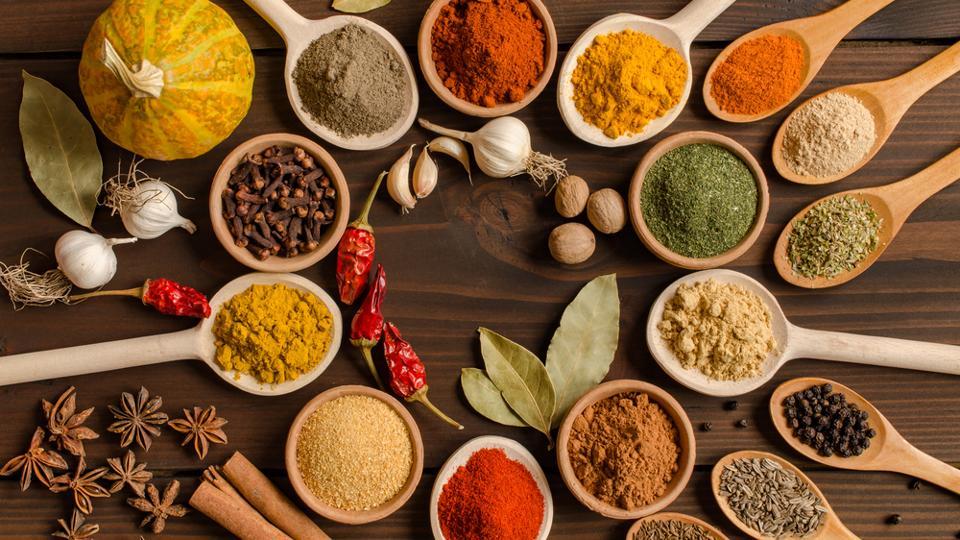New year, New Kitchen
The New Year is a great time to de-clutter, toss the junk (looking at you, half-eaten bag of kettle chips!), and organize your pantry and kitchen to set you up for clean-eating success. An organized kitchen filled with healthy foods can help you reset your diet and stick with it.
Here are my must-haves to help you prepare healthy, fast, and flavorful meals this year. (You can find more nutrition tips on my blog, Appetite for Health.)
Fruit and Veggies
A healthy kitchen starts with fresh produce–yes, even in winter. Fruits and vegetables deliver vitamins, minerals, and plant nutrients that protect against chronic conditions including obesity, heart disease, type 2 diabetes, and dementia. Keep a good variety on hand and aim to eat at least two servings of fruit and three servings of vegetables every day.

I always like to stock my kitchen with potatoes, onions, garlic, lemons, and limes for cooking. In addition, buy fresh produce like apples and oranges that you can toss in your bag for on-the-go healthy snacks. Make sure you have leafy greens and non-starchy veggies on hand too to help you stick to a plant-based eating plan.
How to use them: Choose more recipes that call for veggies; add veggies to egg dishes, smoothies, and even muffins; eat fruits and veggies as snacks. Shredded veggies can even replace some of the meat in burgers.
Greek Yogurt
Nonfat or low-fat Greek yogurt is a stellar source of high-quality protein and many essential nutrients like calcium and potassium. Traditional Greek yogurt is strained so it removes the watery whey, resulting in a thicker, creamier yogurt with twice the protein and about half the sugar of regular yogurt. A typical single-serving container of nonfat Greek yogurt packs around 17 grams of protein—about the equivalent of three eggs!
How to use it: Enjoy with fresh fruit as a snack or use to make smoothies, as an oatmeal topper, or as a healthier stand-in for sour cream or mayo in most recipes.
Nuts
It’s okay to get a little, um, nutty for your health’s sake. Research reveals that people who eat around an ounce of nuts per day–whether they prefer almonds, cashews, walnuts, pistachios, or another nut–tend to be thinner and have lower risk for heart disease and certain cancers compared to those who avoid nuts. Because nuts are high in fat, they are calorie-rich, so portion control is key. Nutritionally, all nuts are rich in heart-healthy unsaturated fat and protein and provide nutrients like vitamins B and E, magnesium, and filling fiber.
How to use them: Toast them to bring out even more flavor so you can use less. Chop and sprinkle over oatmeal, yogurt, salad greens, roasted veggies, or whole grains.
Extra Virgin Olive Oil
Rich in heart-healthy monounsaturated fats and low in unhealthy saturated fats, EVOO has decades’ worth of research documenting its cardiovascular benefits. EVOO is the primary fat used in the Mediterranean diet, considered the gold standard for health and longevity.
How to use it: Save pricey EVOO for dipping and drizzling over foods. Combine it with vinegar to make delicious, tangy salad dressings.
Whole Grains
Despite popular opinion, there’s no reason to give up carbs entirely if you’re trying to lose weight or improve your health this year. In fact, whole grains (like brown rice, quinoa, farro, oats, and barley) have been linked to a lower risk of heart disease, type 2 diabetes, obesity, and certain types of cancer. Eating more whole grains may even add years to your life.
Whole grains provide filling fiber plus beneficial antioxidants, vitamins, and minerals. Strive to get about three servings of whole grains per day.
How to use them: Enjoy oats or other whole-grain cereals for a hearty breakfast. Add couscous, farro, quinoa, or other cooked whole grains to salads or side dishes. Bake with whole-grain flour whenever possible.
Canned Beans
Canned beans are one of the most versatile and convenient staples to stock in your healthy kitchen. Beans are rich in fiber, protein, antioxidants, potassium, and iron. Research shows that eating beans can help you manage your waistline and reduce your risk for heart disease. Shoot for half a cup three times a week.
How to use them: Snack on roasted chickpeas or spread hummus on your sandwich in place of mayo. Add them to hearty soups, turkey chili, or burrito bowls. Pureed beans can also be used to replace about half of the oil in baked goods like brownies, cookies, and cake.
Canned Seafood
A tin or pouch of tuna or salmon is packed with omega-3 fatty acids that help protect your heart, boost brain power, elevate mood, maintain eyesight, and keep joints mobile. As a result, most health organizations recommend eating at least two servings of fish or seafood per week–and when it comes from a can you don’t even have to cook! Salmon, tuna, anchovies, and sardines are all good options for lean sources of protein and other important nutrients and vitamins.
How to use it: Make salmon cakes or burgers. Use tuna as a protein-packed salad topper or a savory addition to pasta dishes.

